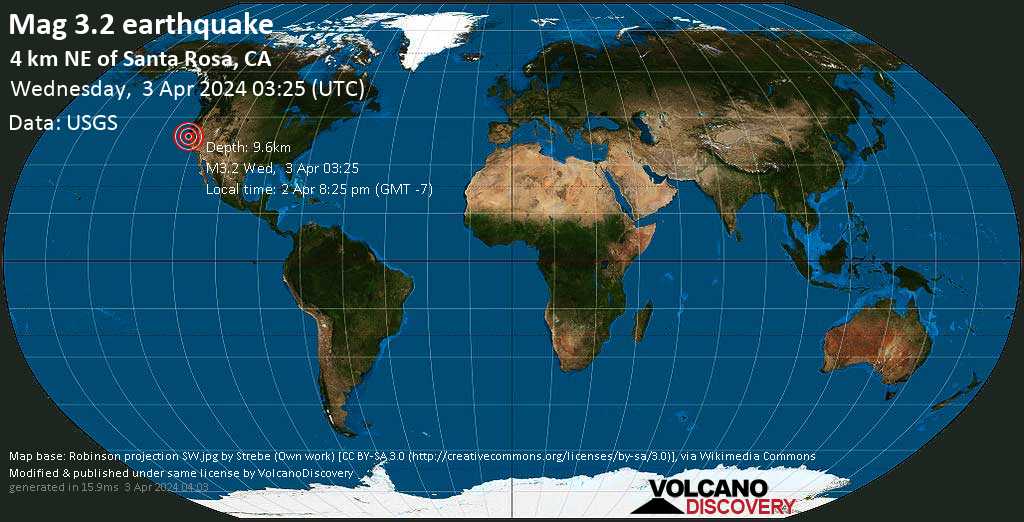On April 2nd, 2024, the city of Santa Rosa, California, experienced a minor earthquake with a magnitude of 3.2. While the seismic event did not cause significant damage, it serves as a reminder of the ongoing seismic activity in California and the potential risks associated with living in earthquake-prone regions. This article examines the impact of the 2024 Santa Rosa earthquake, delving into the science behind minor earthquakes, the response of local communities, and the lessons learned from the event.
Understanding Minor Earthquakes
Minor earthquakes, such as the one experienced in Santa Rosa, are relatively common occurrences in seismically active regions like California. These events are typically characterized by low magnitudes and shallow depths, resulting in minimal damage to infrastructure and property. However, despite their relatively benign nature, minor earthquakes serve as important reminders of the underlying tectonic forces at work beneath the Earth’s surface.
The 2024 Santa Rosa Earthquake: Magnitude and Impact
The earthquake that struck Santa Rosa on April 2nd, 2024, had a magnitude of 3.2 and occurred at a very shallow depth of 6 miles beneath the epicenter. While the quake was not strong enough to cause significant damage, it was widely felt in the area surrounding Santa Rosa. Residents reported light vibrations and shaking, but no reports of injuries or structural damage were recorded.
Response and Preparedness
In the aftermath of the earthquake, local authorities and emergency responders in Santa Rosa activated response protocols to ensure the safety and well-being of residents. While the event did not require extensive search and rescue efforts, it served as a valuable opportunity for communities to review and reinforce their preparedness measures. Public education campaigns, seismic retrofitting initiatives, and community drills play a crucial role in enhancing resilience and mitigating the impact of future seismic events.
Lessons Learned and Future Mitigation Efforts
The 2024 Santa Rosa earthquake provides valuable insights into the importance of ongoing monitoring, preparedness, and response efforts in earthquake-prone regions. While minor earthquakes may not cause widespread damage, they serve as important reminders of the need for vigilance and resilience. Moving forward, investments in early warning systems, infrastructure resilience, and public awareness campaigns will be crucial in minimizing the impact of future seismic events on communities in California and beyond.
The 2024 Santa Rosa earthquake serves as a testament to the dynamic nature of Earth’s geology and the ongoing threat of seismic activity in California. While minor earthquakes may not garner the same level of attention as major events, they nonetheless highlight the importance of preparedness, response, and mitigation efforts in earthquake-prone regions. By understanding the impact of minor earthquakes and taking proactive measures to enhance resilience, communities can better prepare for the inevitable challenges posed by seismic events in the future.
